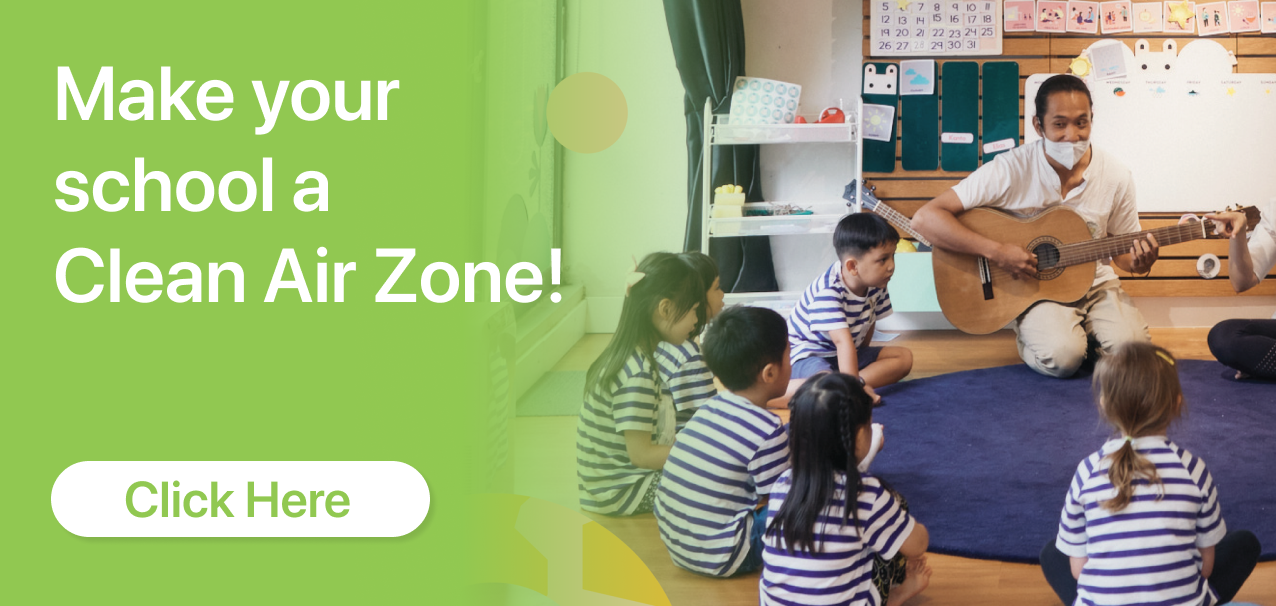LEARN / ARTICLE
CAZ Stories: Nafas improved indoor air quality by 89,5% at Mighty Minds Preschool
CAZ Stories is a series of success stories highlighting the impact of Clean Air Zones on diagnosing and fixing indoor air quality problems for businesses in Indonesia. For more insights, read our previous case studies:
Air pollution in Jakarta has been a long-standing problem - in 2022, the average PM2.5 concentration outdoors was was 37 µg/m3, which is 7 times higher than the annual WHO standard of 5 µg/m3.
Particulate Matter 2.5, or PM2.5, is a pollutant which the World Health Organization has highlighted as a hazard to our health, due to its small size and ability to penetrate deep into our lungs. PM2.5 affects all people, but has an additional impact on sensitive groups which include children under 5 and adults over 60 years of age.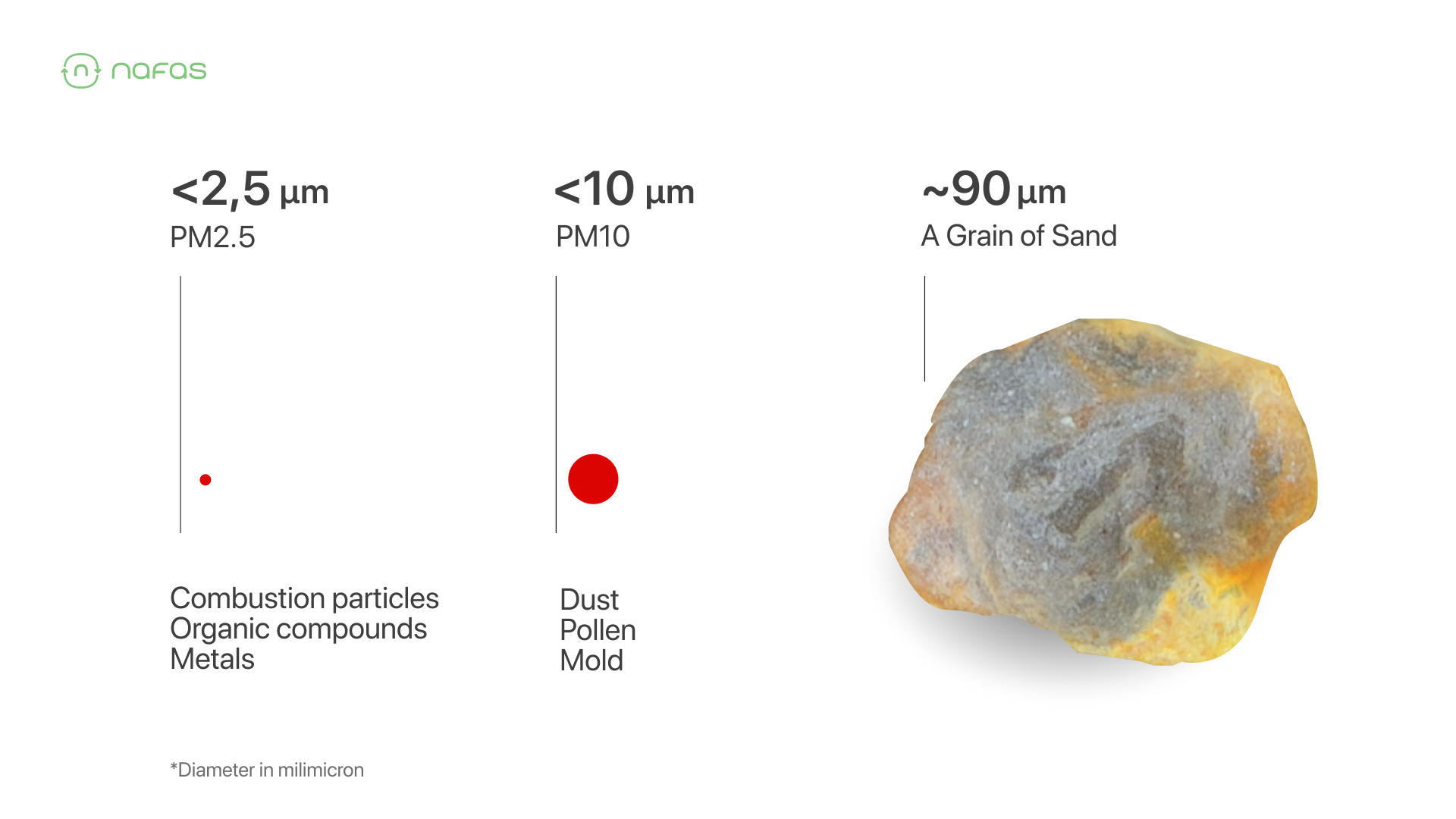
Recently, Nafas published an article titled “Our Buildings Are Broken” which highlights that PM2.5 pollution is not just an outdoor problem, but also an indoor one. In cities where outdoor pollution is high, there is no significant difference between the air quality outside and inside.
This is true of our schools as well, where healthy air quality shouldn’t be optional - it should be standard.
PM2.5 pollution impacts school children’s health
A study published on Kosin Medical Journal conducted by researchers in South Korea and Japan examined the short-term effect of PM2.5 on children. Researchers found that the risk of asthma attacks increased by 9% when the concentration of PM2.5 on a day prior to asthma attack days rose by 10 μg/㎥ from the baseline of 15 μg/㎥. (Lee et al., 2018). Addressing this issue is crucial to promoting a healthier school environment for students specifically, but also for teachers and staffs.
Nafas worked together with Mighty Minds Preschool at Hang Tuah, Kemang, and Menteng to focus on improving indoor air quality in the schools and create a safer environment for students at all branches.
The problem: Air quality inside Mighty Minds was unhealthy
To determine the amount of outdoor pollution getting inside the classrooms, Nafas utilized cloud-connected air quality monitors to measure PM2.5, CO2, temperature and humidity.
Throughout the diagnostic period, we discovered that indoor and outdoor air quality was actually quite similar. Looking at data from July 2022, the indoor (pink line) and outdoor (black line) air quality follows almost identical trends. The most concerning part is that it was never below 12 ug/m3, which is “Good”.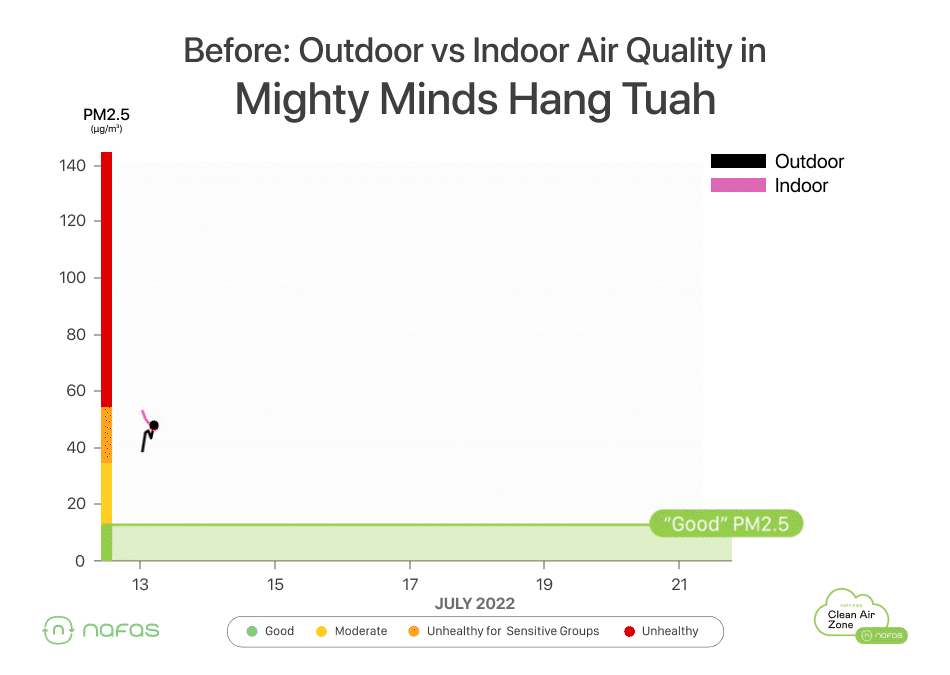
Now let’s move forward several months to January 2023. When reviewing the one week data, we can see that the PM2.5 level indoors reached 42 ug/m3 which is almost 3 times higher than the 15 µg/m3 recommended in scientific studies. The building was able to remove just a little bit of the pollution coming from outside, which is why an additional filtration at Mighty Minds Hang Tuah is needed.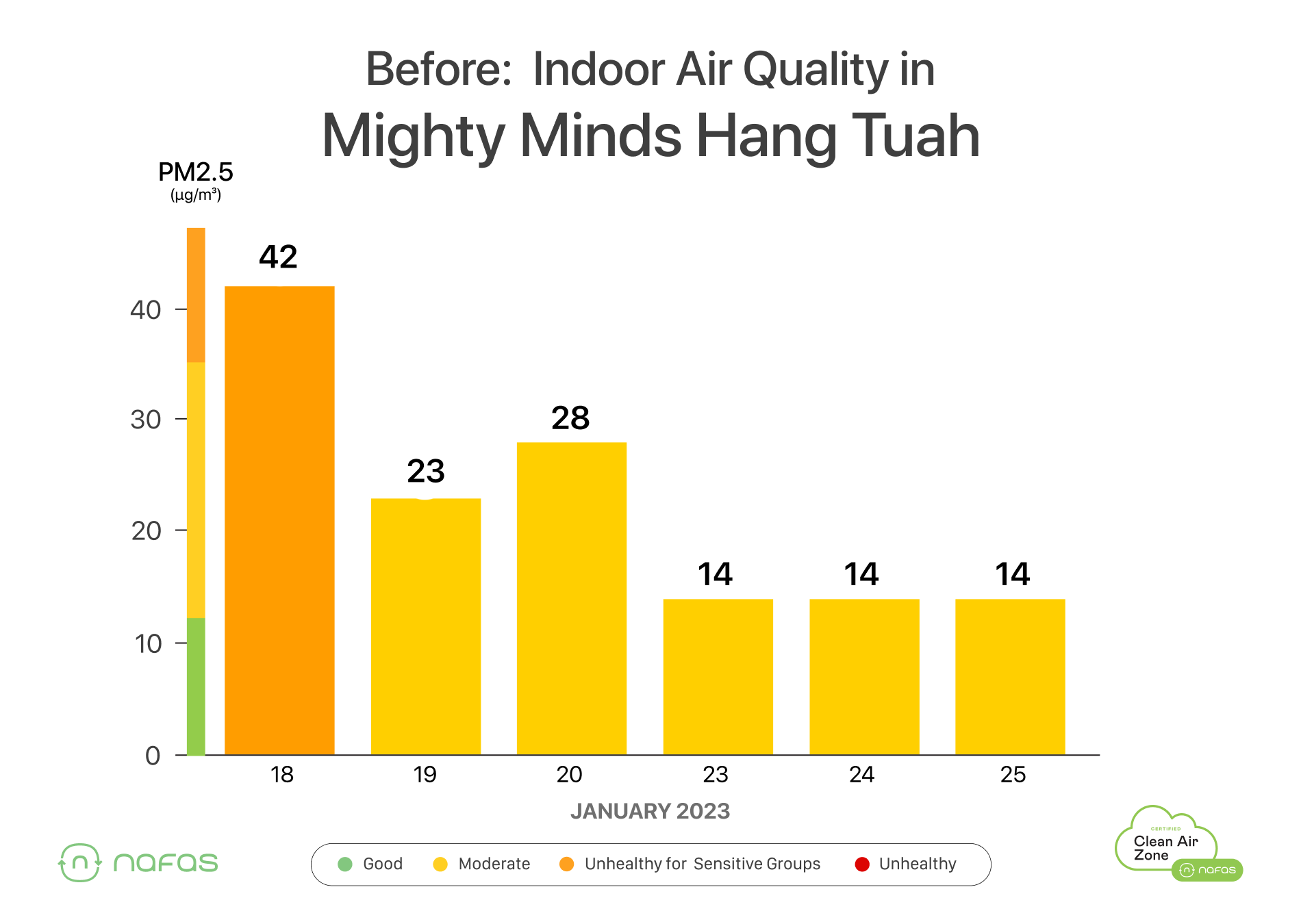
During the diagnostic period, the data that Nafas collects gets translated into an AirScore, which gives a rating to the location based on the health of the indoor air quality.
The final Nafas AirScore for this school was D, meaning that the indoor air quality was not safe and needed drastic action to improve it!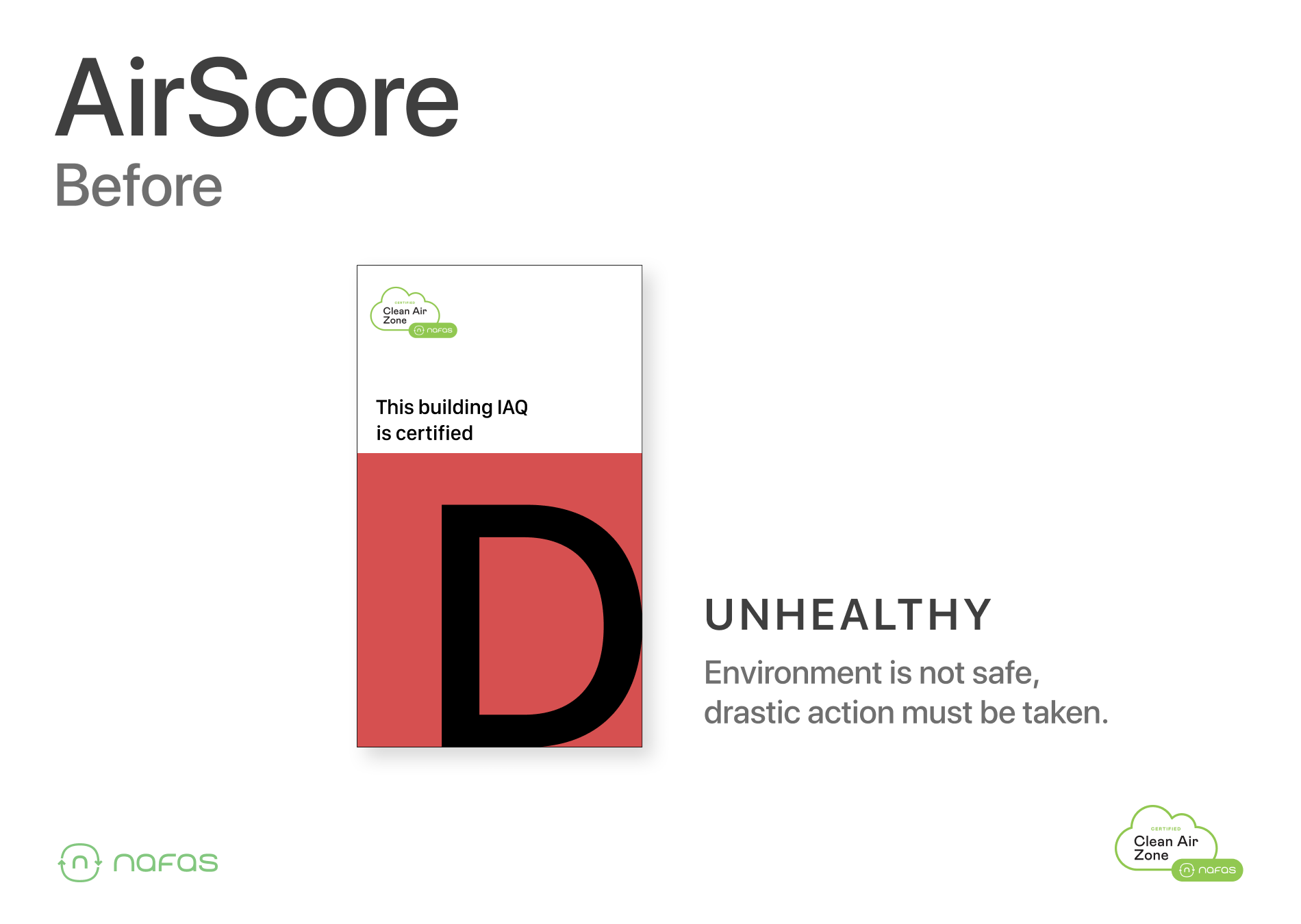
The Solution: Turning Mighty Minds Preschool Campuses Into a Clean Air Zone
To improve indoor air quality in schools in polluted cities like Jakarta, Nafas has created an ecosystem called Clean Air Zones. Clean Air Zones are designed to make indoor air quality healthy during business hours by integrating measuring, cleaning, certification, and air quality data-driven employee engagement programs. With zero up front commitment and a subscription-based service, it’s never been easier to fix bad air quality at your office.
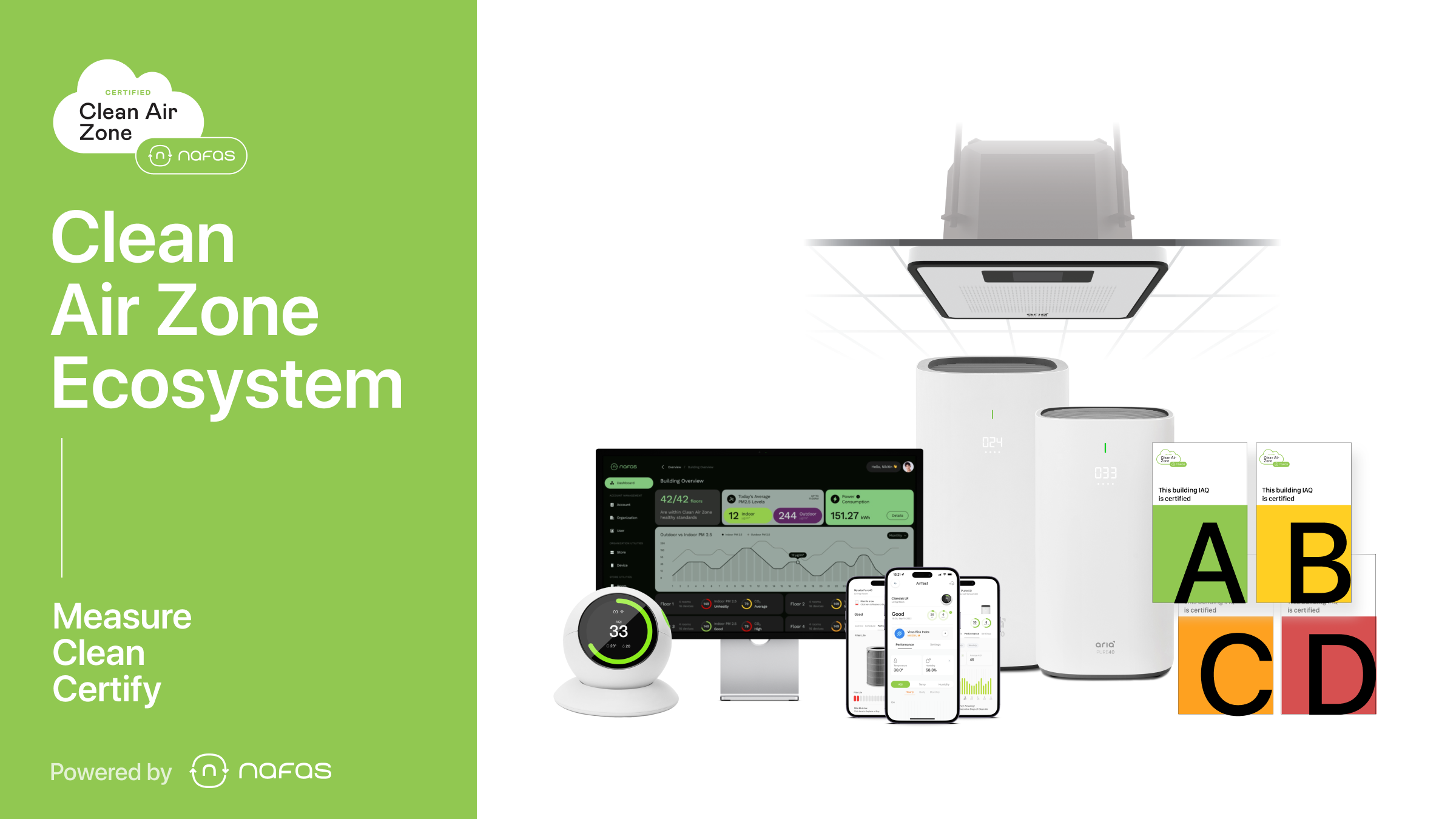
By implementing Clean Air Zones in schools, the indoor air quality can be significantly enhanced, resulting in a healthier environment for both students and school staff.
What's even better?
The process is completely automated, requiring no additional effort from the business. With a simple subscription, you can enjoy the full benefits of this service without any upfront commitments, making it effortlessly convenient to enhance the air quality in your office.
The Result
In January 2023, all three branches of Mighty Minds Preschool at Hang Tuah, Menteng, and Kemang were turned into a Clean Air Zone. This allowed Nafas and the school management to see how significantly the indoor air quality was being improved.
During school hours, the Clean Air Zone maintains the indoor air quality below 12 µg/m3 - ensuring that the children have a safe and healthy environment indoors.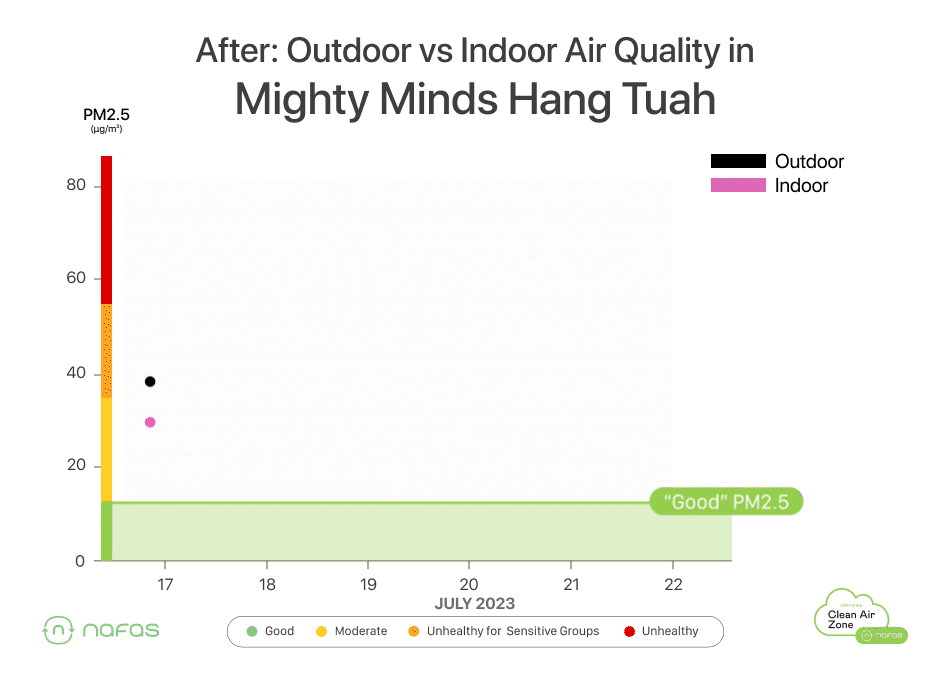
The Clean Air Zones at Mighty Minds successfully maintains the air quality inside all classrooms at a healthy level during school hours.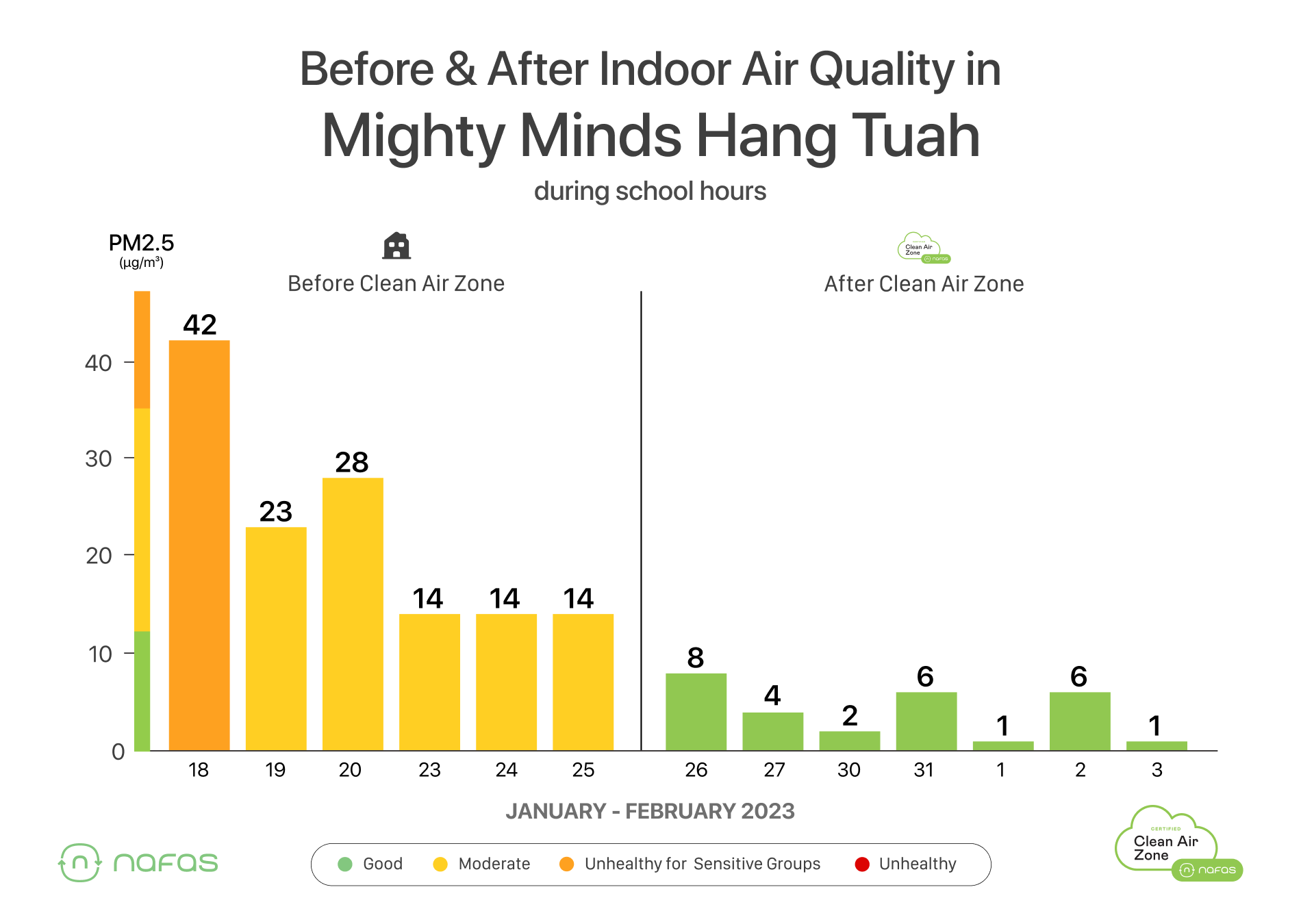
When comparing outdoor air quality to indoor air quality, the significant improvement is far more visible.
Remember the news in August 2023 when outdoor air pollution was extremely high? Well, inside the Mighty Minds campuses, the air quality was kept at healthy levels during school hours at all three schools.
Here’s the data: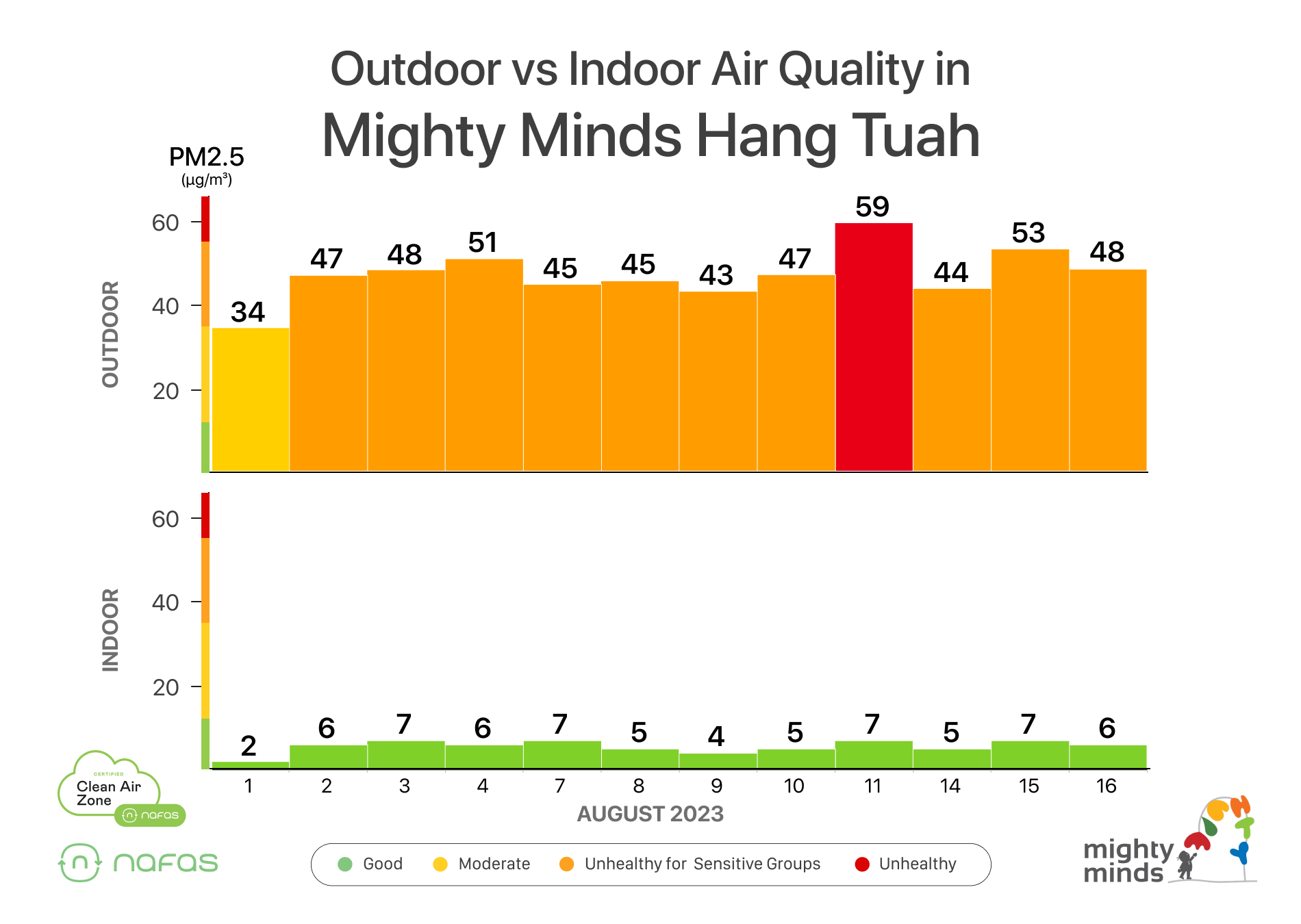
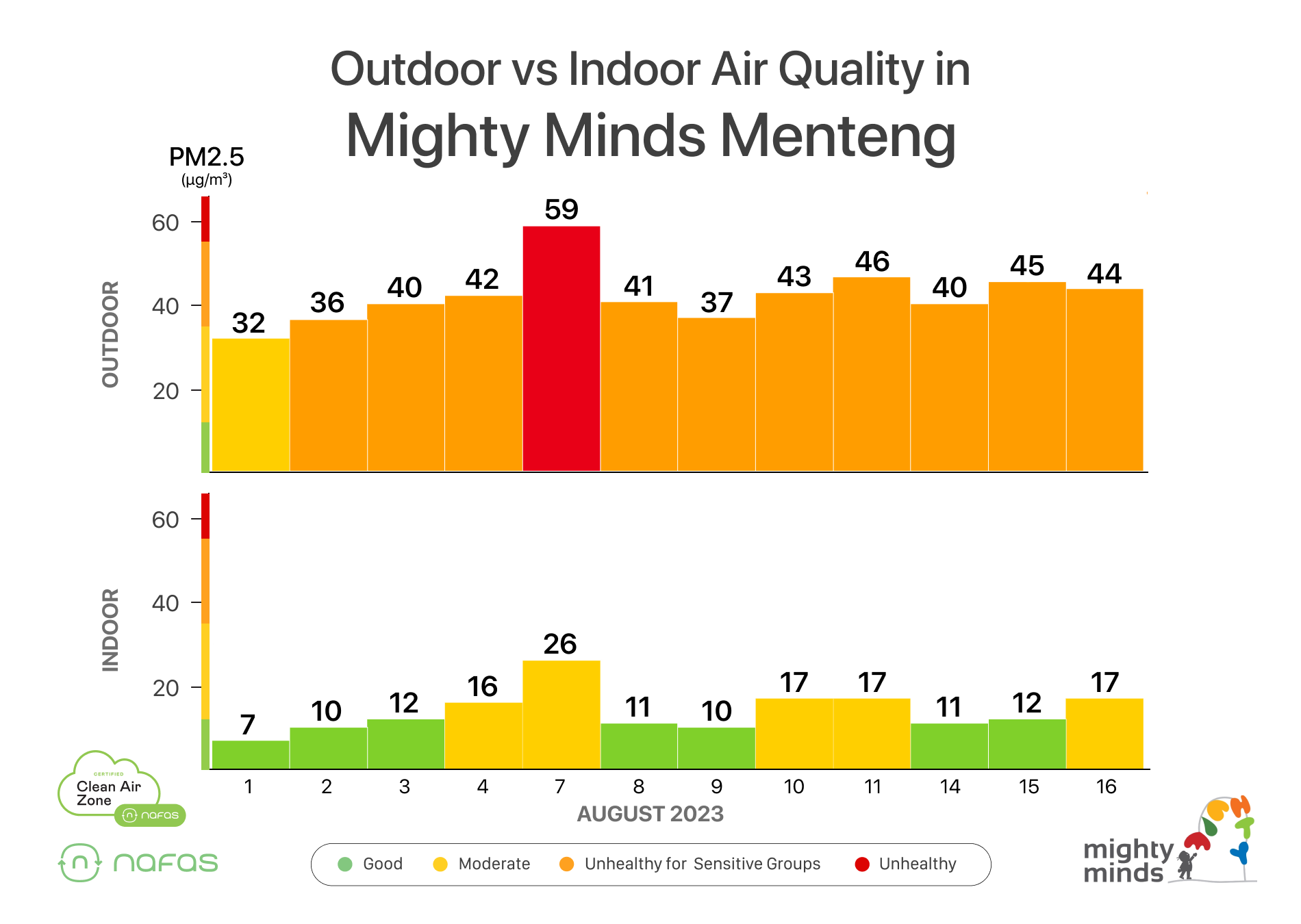
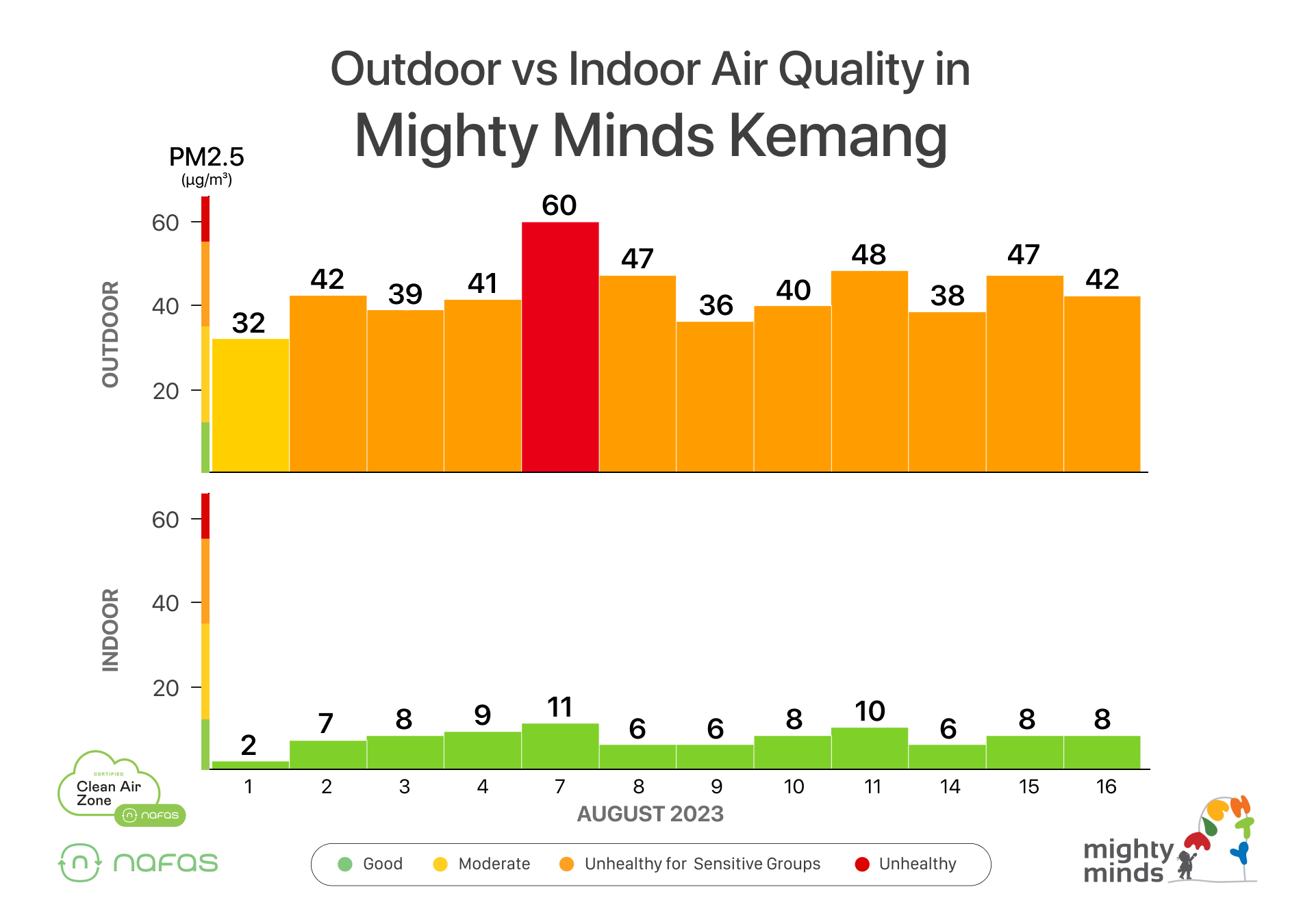
By implementing Clean Air Zones as part of their school commitment to create a safe and healthy study environment at school by reducing students exposure to air pollution, the Mighty Minds Preschool have improved their AirScore from “D” to "A" for all campuses.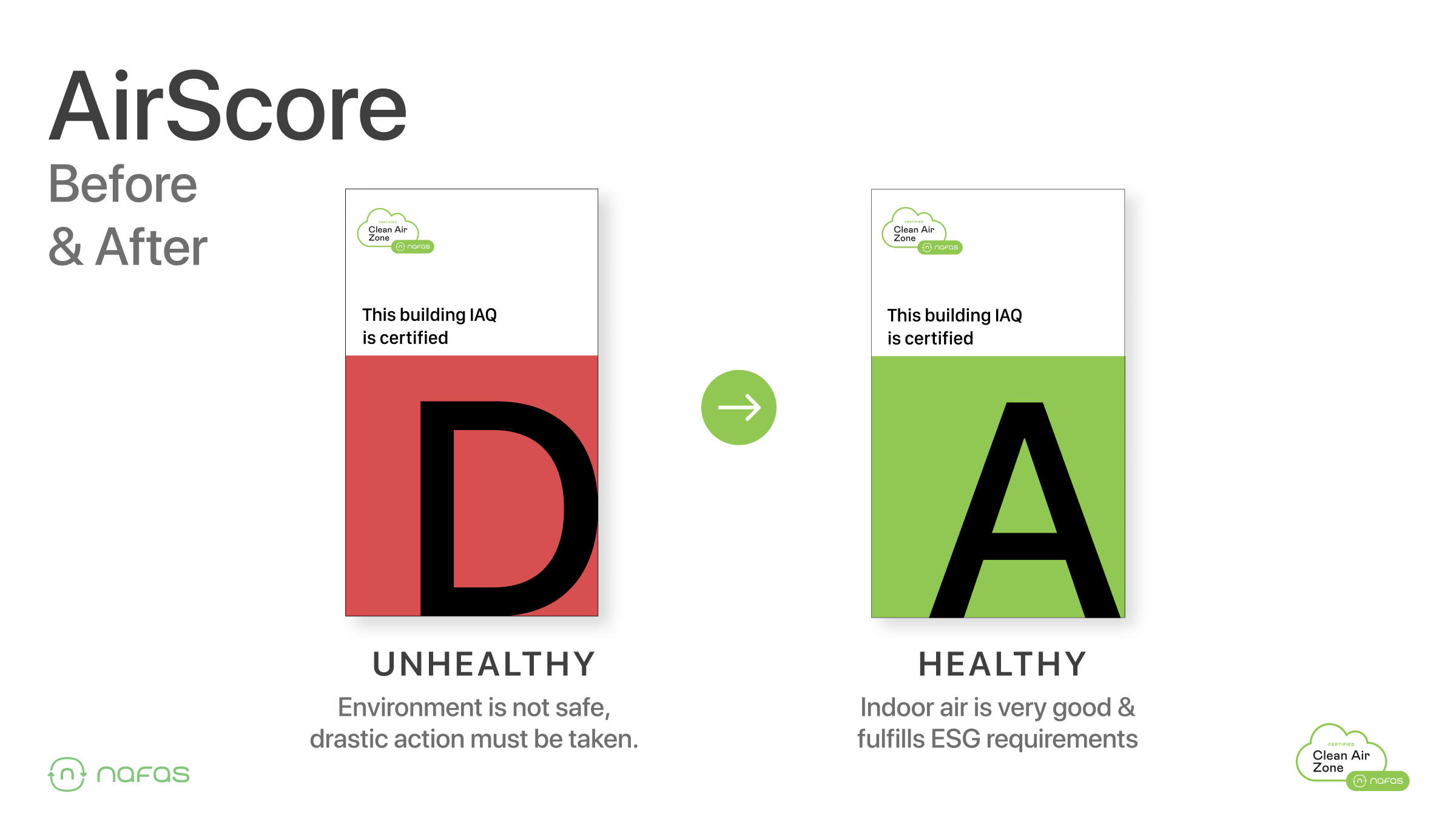
Mighty Minds Preschool is the first school in Indonesia to become a Clean Air Zone, implementing a clean air policy in all of its school activities.
The Monthly Report
Clean Air Zones are data-driven, and each location receives reporting on a weekly or on a monthly basis. These reports highlight the air quality conditions maintained by Clean Air Zones, and provides data that the school can share with parents, teachers, staffs, and and shareholders.
Here’s an example of the school report!
Want to turn your school into a Clean Air Zone?
Becoming a Clean Air Zone is simple! To learn more about Clean Air Zones please email us at [email protected] or click the button bellow to sign up for a free AirScore diagnostic!